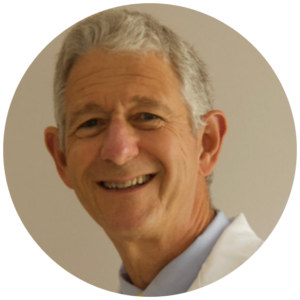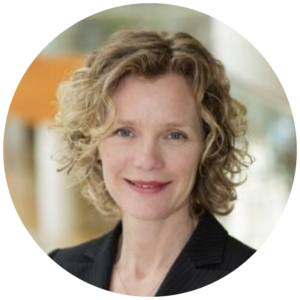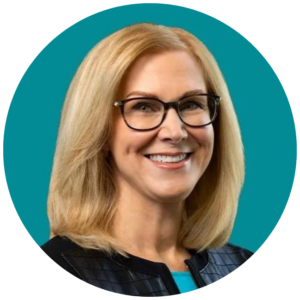Locums CME is a bi-weekly roundup of recent news that matters to locum tenens providers. Stay in the loop on what’s new in the locums industry, and make the most of the locum tenens lifestyle with our fresh finds.
Breaking Down the Top 5 Reasons Physicians are Leaving the Profession
9/26/2023
Physicians face challenges daily that, over time, can start pulling them away from the desire they once had to work in medicine. Physician on FIRE (Financial Independence and Retire Early) conducted an extensive survey of 1,639 physicians in August 2023 to try and uncover why they felt they should leave or change their jobs in the coming months.
PoF compiled the top 5 reasons in a blog post, and here’s what they found:
1. Burnout : Burnout was the most significant reason for physicians leaving their jobs, which likely comes as no surprise. According to the PoF survey, about 59% of physicians said they quit because they have experienced some feelings of burnout. PoF’s survey supports other independent research that also paints a similar picture. Consistently, about half of all American doctors are experiencing burnout. One AMA survey said 56% of doctors under 35 are unhappy with their current medical system.
The physicians described these feelings of burnout stemming from:
- Not feeling valued at work
- Cultural or management concerns
- An overall “lack of support for their well-being.”
- Work-life balance that does not meet their needs and long working hours
Physicians also expressed frustration with increased administrative tasks related to electronic health records (EHRs).
2. Moral injury: Moral injury was the second most common reason physicians gave for leaving their profession. Moral injury refers to physicians’ conflict when considering factors beyond patient well-being, such as financial motivations and corporate pressures when making treatment decisions. The survey found that 16% left their jobs due to moral injury and lack of autonomy.
3. Cost of living and inflation concerns: Approximately 9% of physicians cited cost of living and inflation concerns as reasons for leaving their jobs. Rising inflation rates and the disparity in the cost of living between different states and regions impact the financial well-being of physicians. Some factors that fed these job decisions were physicians seeking a location with a lower cost of living and higher purchasing power.
4. Corporate advancement/benefits: Physicians often leave their jobs to pursue corporate advancement, seeking positions with more responsibility, challenges, and opportunities for growth or promotion. 5% of respondents to the PoF survey claimed corporate advancement was their primary reason for leaving their jobs.
5. Family concerns:
According to the survey, approximately 5% of physicians leave their jobs because of family concerns. The family concerns physicians refer to are a lack of opportunities for spouses and children, insufficient time for family, or a desire to be closer to family members. Recognizing the importance of family in physicians’ lives is crucial to creating work environments and locations that accommodate their family needs.
This summary only scratches the surface of the in-depth study from Physicians on FIRE into why these physicians are leaving their jobs. But it creates a clearer picture of our healthcare system’s significant challenges in addressing these physicians’ struggles. You can dive into the in-depth study by reading the full article here.
Your Locums Prescription
Learning to Embrace the Locums Lifestyle with Dr. Andrew WIlner
9/23/2023

Dr. Andrew Wilner, author of “The Locum Life, A Physicians Guide to Locum Tenens,” appeared recently on the “Physician’s Guide to Doctoring,” A podcast by Dr. Bradley Block, to discuss the locums lifestyle.
Dr. Block is a practicing ear, nose, and throat physician who built a thriving practice for himself but started a podcast to cover everything from his early days as a physician to navigating the medicolegal system, personal finance, and more. He says the podcast is “chock full of all the topics we should have been learning in med school while we were memorizing Kreb’s cycle.”

In the podcast episode, Dr. Wilner discusses the intricacies of the locum tenens industry and topics like physician compensation, adjusting to telemedicine locums, the credentialing process, onboarding, and more.
The podcast episode is available on Apple Podcasts, Amazon Music, and Spotify. You can read more about Dr. WIlner here.
Debunking Common Misconceptions About the World of Locum Tenens
10/3/2023
There are many unknowns and misconceptions about locum tenens. Weatherby Healthcare debunked 10 common myths about locum tenens work with some insight for providers considering this career path.
Myth #1: Locum tenens is only for physicians nearing retirement. In reality, locums can benefit physicians at any career stage, offering opportunities for skill enhancement and income boost.
Myth #2: You can’t work locums full-time. Many physicians choose locum tenens as their full-time career, citing the flexibility it provides for travel and work-life balance.
Myth #3: You must accept every opportunity. Physicians have control over their assignments with the help of consultants who tailor job opportunities to their preferences.
Myth #4: Locum tenens only offers short-term assignments. Physicians can opt for longer-term contracts, including recurring ones, catering to various lifestyle preferences and community needs.
Myth #5: Locum tenens work is unstable. Providers can achieve stability by partnering with reputable agencies that ensure consistent job placements and support.
Locum tenens is a dynamic and adaptable career choice. Weatherby further explains and breaks this down with five more myths they debunk in the full article.
The bottom line is this: there’s no reason to let locum myths prevent anyone from pursuing these opportunities. Locum tenens is an excellent career path for anyone interested. Check out the entire article from Weatherby for more debunked myths, details on locum tenens, and how to find opportunities.
Locum Tenens a Great Opportunity For Women Looking For Balance
9/14/2023
Cardiothoracic surgeon Susan Trocciola, MD, has worked locum tenens assignments with All Star Healthcare Solutions since 2015. While she’s worked many temp and full-time jobs, she prefers the freedom and flexibility of a locum tenens practice. As a cancer survivor, she values the ability to balance work and personal life, an essential aspect of locum tenens practice.
All Star Healthcare Solutions recently published an article discussing female healthcare providers’ challenges, like burnout and the conflict between work and parenting responsibilities. Locum tenens offers a solution for this conflict by allowing professionals more control over their schedules, ensuring dedicated time for work, family, and self-care. This flexibility can help prevent burnout and enhance overall well-being.
The financial benefits of locum tenens, whether for a provider’s primary or supplemental income, can enhance a physician’s retirement earnings, cushion their college savings, or speed up their plans to pay down debt. Working with an agency also allows providers to hand over logistics like housing, travel, and credentialing to someone who does it for a living and will worry about it, so providers don’t have to worry. Locum tenens also serves as a transition phase to retirement, which allows healthcare providers to keep their skills sharp while gradually easing into semi-retirement.
For female providers seeking a better work-life balance and considering locum tenens as the answer, discover more in-depth info in the full article from All Star.
How Locum Tenens Assignments Stack Up to Perm Placement Gigs
9/18/2023
The Locumstory Advisory Board recently discussed vital differences between locum tenens and permanent placement jobs in healthcare. Locumstory’s Advisory Board consists of experienced locums physicians Dr. Trevor Cabrera, Dr. Nicholas Kusnezov, Dr. Marye McCroskey, and Dr. Rip Patel.
One significant contrast the board pointed out was the scheduling flexibility of locum tenens assignments vs. permanent healthcare jobs. Locum tenens providers enjoy a certain level of freedom, setting their schedules to avoid the rigidity of permanent positions. The flexibility helps mitigate burnout, and providers take more control over their work-life balance. However, this comes at the cost of income predictability, as locum assignments lack the guarantee of a regular salary.
Administrative responsibilities differ significantly as well. Locum providers typically experience a reduced administrative burden compared to their permanent counterparts. Locum tenens providers can avoid numerous meetings and billing paperwork and even receive agency support for credentialing and licensing, giving them more time for patient care.
Taxation and benefits also vary between the two. Locum tenens providers work as independent contractors, necessitating self-employment tax payments and the responsibility to secure their health insurance and benefits. On the other hand, permanent physicians often have these benefits provided by their employers.
For a more in-depth exploration of these differences between locum tenens and permanent placement, read the full article from Locumstory.
Physician Wellness Retreat
AMA Says To Begin Addressing Burnout At the Organizational Level
10/3/2023
Medical students and resident physicians are grappling with the same high levels of burnout — between 50-60% — as other practicing physicians despite being at different stages of their careers.
 Dr. Lotte Dyrbye, Chief Well-Being Officer at the University of Colorado School of Medicine, points out that burnout among these trainees is a result of factors within the healthcare system like workload, work intensity, or work compression in a recent episode of the American Medical Association’s “AMA Update.”
Dr. Lotte Dyrbye, Chief Well-Being Officer at the University of Colorado School of Medicine, points out that burnout among these trainees is a result of factors within the healthcare system like workload, work intensity, or work compression in a recent episode of the American Medical Association’s “AMA Update.”
Burnout in medical students and residents often leads to a loss of meaning in their work, Dr. Dyrbye says, as they juggle education and patient care. Organizational culture also plays a significant role, with faculty members’ treatment affecting stress levels. Additionally, social isolation exacerbates burnout, particularly when trainees lose their social support networks.
To address this issue effectively, Dr. Dyrbye calls on organizational leaders to initiate change by allocating resources and dedicating individuals responsible for improving the learning environment. Medical schools and residency programs should empower faculty to prioritize education in clinical settings and equip them with the necessary skills for effective teaching.
Dr. Dyrbye will deliver a keynote speech at the American Conference on Physician Health, where she plans to discuss further insights on addressing medical student and resident burnout. Reducing burnout is crucial to the AMA’s Recovery Plan for America’s Physicians, emphasizing physician well-being and workflow improvements for better patient care. Read the full article for more from AMA on strategies to prevent burnout.
Physician Burn-In: Recognizing the Silent Epidemic in Healthcare
9/19/2023
The 2023 U.S. physician burnout and depression report by Medscape shows us that despite increased attention to the issue, physician burnout has surged 11% since 2018 to 53% overall. This growing problem is called “burn-in,” a concept akin to a permanent watermark on a screen caused by long-term static images. Physicians experiencing burn-in may not even recognize the signs, as work has become synonymous with life and it starts to erase any distinction between the two.
The symptoms of “burn-in” include a lack of breaks, the absence of work-life balance, and even the misperception of unaffected well-being when taking burnout surveys. This prolonged burnout can lead to severe consequences, including depression, anxiety, increased medical errors, malpractice risk, high turnover rates among physicians, lower patient satisfaction, and compromised care quality.
The survey from Medscape identifies key reasons for burnout, such as excessive bureaucratic tasks, lack of respect from coworkers, and long work hours. To address these issues, structural and systemic changes are crucial. Automation and delegating non-physician tasks can alleviate some of the bureaucratic burdens.
The burn-in problem extends beyond physicians, though, affecting healthcare professionals in administrative roles, and in other industries. The article from Forbes calls for the healthcare industry to listen to its physicians and start implementing necessary changes to combat this issue effectively. For more on how to fix the burn-in problem, read the full article from Forbes.
Doctor’s Notes
The Rising Role of Pharmacists In Response to PCP Gaps
9/2/2023
A recent data report from Surescripts reveals a rise in pharmacists’ involvement in caring for patients with chronic conditions. The report, titled “Pharmacy Availability & Prescribing Patterns Hint at the Future of Primary Care,” highlights a substantial increase in pharmacists e-prescribing for drug classes related to diabetes, mental health conditions such as depression and anxiety, and blood-thinning medications.
Between 2019 and 2022, the number of pharmacists on the Surescripts network more than doubled, while primary care prescribers, including physicians and nurse practitioners, increased by 0.6% per year on average during the same period. E-prescribing data from Surescripts also showed a 47% increase in e-prescriptions issued by pharmacists between 2019 and 2022. Medications for chronic conditions consistently ranked as the most prescribed by pharmacists during this time. The top three drug classes included diabetes medications, mental-health psychoanaleptics, and antithrombotic agents for blood thinning.
The report shows the importance of policy and payment structures aligning with the evolving role of pharmacists in patient care teams. All 50 states and D.C. enable collaborative practice agreements, which documents that establish a legal relationship between clinical pharmacists and physicians that allows for pharmacists to participate in collaborative drug therapy management. However, the specifics of how much authority a pharmacist has in prescribing medication varies by state and medication type.
Advocates stress the need for policies that reinforce pharmacists as essential collaborators in patient care. In regions with limited primary care providers, independent pharmacies, which accounted for 41.7% of these locations, are significant in filling primary care gaps.
For further insights into how pharmacists are leveraging technology to bridge primary care gaps, read the full article from BusinessWire.
AMN Consolidates Merritt Hawkins, Staff Care As ‘AMN Healthcare Physician Solutions’
10/2/2023
AMN Healthcare Services Inc. announced the consolidation of its physician staffing brands, Merritt Hawkins and Staff Care, into a unified business line called “AMN Healthcare Physician Solutions.”
Through this move, AMN is trying to enhance the overall physician experience for healthcare organizations and clinicians. The integration comes as a response to costly physician staffing shortages faced by healthcare institutions, which result in lost revenue, treatment delays, extended patient waiting times, and physician burnout.
 AMN Healthcare President and CEO Cary Grace said this consolidation is significant in addressing the healthcare industry’s ongoing workforce challenges. AMN Healthcare Physician Solutions manages more than 3,000 physician recruitment assignments yearly, placing locum tenens, permanent physicians, dentists, and advanced practice providers in various healthcare settings nationwide.
AMN Healthcare President and CEO Cary Grace said this consolidation is significant in addressing the healthcare industry’s ongoing workforce challenges. AMN Healthcare Physician Solutions manages more than 3,000 physician recruitment assignments yearly, placing locum tenens, permanent physicians, dentists, and advanced practice providers in various healthcare settings nationwide.
See the full release from Staffing Industry Analysts about the merger here.










